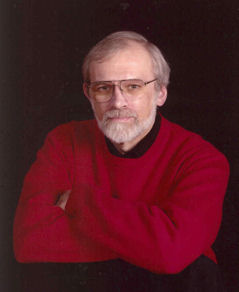WALLY!
Today (April 27) saw a meeting of the Washtenaw-Livingston "WALLY" commuter rail initiative. Interesting. It was packed - except for me and one other self-identified "interested citizen" - pretty much with "VIPs". Mayors, a state representative, councilmen, presidents of companies, heads of transportation agencies, even the Federal Railroad Administration sent two reps. I won't list anyone's name for fear of leaving someone out. Trust me, it was impressive.
As you may know, Ann Arbor Transportation Authority has agreed to take charge of the Wally project, shepherding it through its development phase and fielding federal and state transit dollars to pay for it. Tom Cornillie is the point man, doing a great job for AATA. The major step forward right now is getting two public relations firms on board: one to do input (community survey), the other output (publicity). Ilium Associates, the "input" company, has done work to support rail startups in Seattle, San Diego, Miami, Spokane, and several other places. Bob Prowda, Exec VP, is their representative. The "output" company, The Rossman Group, is a Lansing PR firm that has done a lot of local work in Michigan. Appropriately, Mark Pischea, President, worked with the Michigan Republican Party - he can focus on Livingston County - and Josh Hovey, Senior Account Exec, is a Democrat, so he can represent the firm in Washtenaw. Looks like a really good team.
What about stimulus funds? Well, maybe. According to Terri Blackmore of WATS, there's a $1.5 billion pot of money to be divided around the nation, and WALLY is probably eligible for some of it. (Crumbs, is my guess.) We won't know if we'll get any of it until the end of September, and we can't even apply until the application and eligibility rules come out May 18. Stay tuned.
A couple of other pieces of good news: Beck Development, which owns a generous pie-slice of land between Eight Mile Road and the track, west of Whitmore Lake, has begun demolition of the old Hoover-Universal / King-Sealy factory. That will make way for some kind of transit-oriented development and a park-and-ride lot, potentially a parking deck if there's demand for one. Here's a photo from my cell camera of the demolition operation.

Howell has also gotten on board with a downtown plan that incorporates the station. I hope to get more details on their plans and Beck's soon, and pass them along to you.
Finally, a big pat on the back to Great Lakes Central Railroad, lessors of the track. (The track belongs to the State, under MDOT.) Lou Ferris, CEO of parent Federated Capital, was at the meeting along with Mike Bagwell, President of GLC and several GLC staff members. It's because of Ferris's vision of restored passenger service north-south in Michigan that Federated is leasing the line and running trains on it, and that WALLY is advancing so fast. Now, if only the Ann Arbor Railroad... And it's because of Bagwell and the staff that GLC's operation is doing well. I caught this picture with my cell phone camera of a GLC doing good, old-fashioned, manual maintenance of way, which is at the heart of running a good railway. They're just north of the future Whitmore Lake station, at the Eight Mile crossing.  Good work, guys, all of you!
Good work, guys, all of you!
Jackson Citizens for Economic Growth
They may not have Ann Arbor Spark, but look out for Jackson! They're eager to get their city back up and running, and two-year-old Jackson Citizens for Economic Growth (JCEG) is kicking it! They are totally pushing for the Ann Arbor-Detroit commuter rail project (managed by SEMCOG) to come out to Jackson.
So they brought Rick Harnish, of the Midwest High Speed Rail Association advocacy group (of which I've been a proud member for several years) in from Chicago (on the train, of course!) to discuss the benefits of high speed rail for Jackson tonight. His message is not new to me, so if you're curious, visit his Web site.
One audience member asked why we're proposing to invest in "yesterday's technology" (rail) instead of monorail or maglev, and the answer was interesting. It involves the physics of rail, monorail, and maglev, but the short answer is that two steel rails on transverse ties can carry more weight at less cost than either other system. Monorails are particularly limited in weight, and meglevs are incredibly expensive. The only maglev in scheduled operation is in Shanghai, and the Chinese Government, who built it based on a German plan, isn't discussing how much it cost.
The highlight for me was the contrast between one young man in the audience, who said in effect, "Michigan is dying, so what good will a train do?", and the young people of Question, a JCEG group for those 19-40 who want to make a difference. The Question people are enthusiastic, energetic, articulate, and confident (as well as extremely good-looking!). They are not willing to wait for the older generation to "do something". They really give me hope, not only for Jackson, but for the rest of Michigan.








